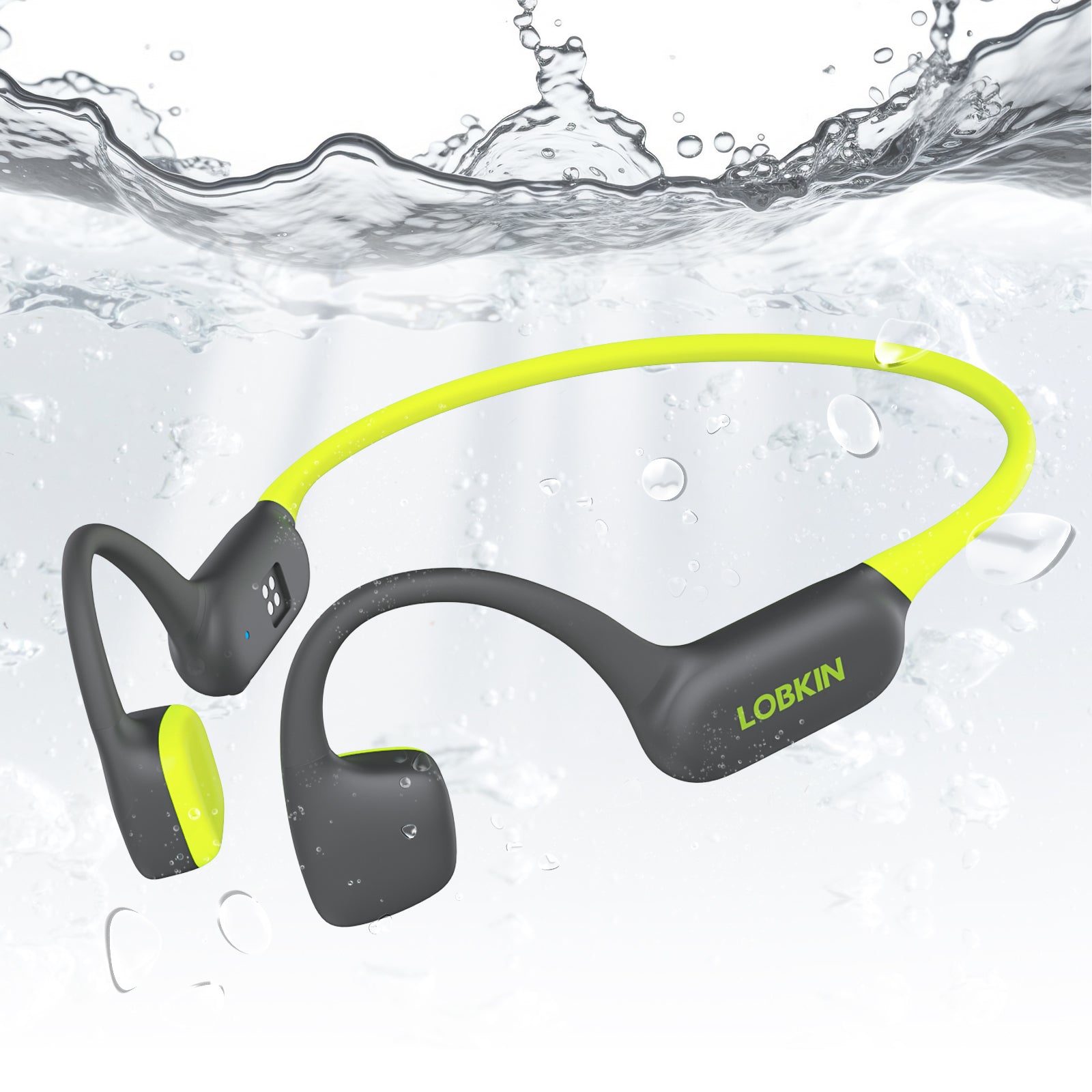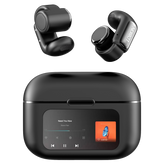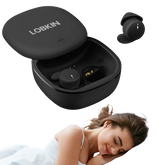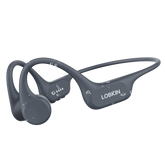The Importance of Situational Awareness During Exercise
Introduction
Music and podcasts can make exercise more enjoyable and help you push through tough workouts. However, blocking your ears while exercising, especially outdoors, creates a serious safety risk. Every year, thousands of runners, cyclists, and outdoor enthusiasts are injured or killed in accidents that could have been prevented with better situational awareness.
This comprehensive guide explains why situational awareness is crucial during exercise, the dangers of blocked ears, and how to enjoy audio safely while staying connected to your environment.
What is Situational Awareness?
Definition
Situational awareness is the ability to perceive and understand what is happening around you in real-time. It involves using all your senses - especially hearing and vision - to detect potential threats, changes in your environment, and important information.
Why Hearing Matters
While vision is important, hearing provides 360-degree awareness that vision cannot match. You can hear approaching vehicles from behind, cyclists calling out warnings, other runners or pedestrians, emergency sirens, aggressive animals, and changes in terrain or weather.
The Dangers of Blocked Ears During Exercise
Accident Statistics
Research shows alarming trends: Pedestrians wearing headphones are 3 times more likely to be hit by vehicles. 70% of pedestrian-vehicle accidents involve lack of awareness. Headphone use is a factor in 25% of running injuries. Most accidents occur when the victim could not hear warnings.
Real-World Incidents
Urban running: Runners hit by cars at intersections, cyclists unable to hear approaching runners, pedestrians stepping into bike lanes without hearing bells, runners missing traffic signals and warnings.
Trail running: Encounters with wildlife (bears, snakes, aggressive dogs), collisions with mountain bikers, getting lost due to missing trail markers or warnings, injuries from not hearing terrain changes.
Road cycling: Hit from behind by vehicles, unable to hear approaching cars, missing verbal warnings from other cyclists, not hearing mechanical issues with bike.
How Traditional Headphones Compromise Safety
Complete Ear Canal Blockage
In-ear headphones and earbuds create a physical seal that blocks external sounds. This eliminates your ability to hear approaching vehicles, warning shouts, emergency sirens, other exercisers, and environmental hazards.
Active Noise Cancellation
While great for planes and offices, ANC is dangerous during outdoor exercise. It actively cancels external sounds, creates false sense of isolation, makes you unaware of surroundings, and is especially risky in traffic or on trails.
Volume Escalation
When exercising with traditional headphones, people tend to increase volume to overcome background noise, compete with their own breathing and footsteps, maintain energy during tough sections, and compensate for poor fit. This further reduces awareness and increases hearing damage risk.
Legal and Liability Issues
Laws About Headphones While Exercising
Many jurisdictions have laws restricting headphone use during outdoor activities. Some states ban earbuds while running on roads, cyclists may not be allowed to use headphones, insurance may not cover accidents if ears were blocked, and liability can fall on the exerciser if they could not hear warnings.
Check Your Local Laws
Before exercising with headphones, research local regulations about headphone use while running or cycling, restrictions in parks or trails, liability implications, and insurance coverage limitations.
The Solution: Open-Ear Audio Technology
Bone Conduction Headphones
Bone conduction technology solves the safety problem by transmitting sound through cheekbones to inner ear, leaving ears completely open and unobstructed, allowing full environmental awareness, and providing quality audio without blocking ears.
How It Works
Transducers sit on cheekbones just in front of ears. Vibrations travel through bone directly to cochlea. Brain interprets vibrations as sound. Ears remain completely open to environmental sounds.
LOBKIN Bone Conduction for Exercise
X10 Bone Conduction Headphones: Bluetooth 5.3, IPX5 waterproof, 8-10 hour battery, lightweight design, secure fit for running.
X25 Bone Conduction Headphones: Bluetooth 5.4, enhanced bass technology, 10 hour battery, premium sound quality, advanced sweat resistance.
Situational Awareness Best Practices
For Urban Running
At intersections: Always look both ways even with walk signal, make eye contact with drivers, never assume drivers see you, remove one earbud if using traditional headphones, or better yet use bone conduction.
On sidewalks: Stay alert for cars backing out of driveways, watch for opening car doors, be aware of cyclists on shared paths, listen for warnings from other users, and keep volume low enough to hear surroundings.
In traffic: Run against traffic when on roads, wear reflective gear, use lights in low visibility, stay on sidewalks when available, and never rely solely on vision.
For Trail Running
Wildlife awareness: Listen for animal sounds and movements, make noise to alert animals of your presence, know what wildlife is common in the area, carry bear spray in bear country, and never use noise-cancelling headphones on trails.
Trail etiquette: Listen for approaching mountain bikers, step aside when you hear others, call out when passing, be aware of trail conditions, and listen for warnings about hazards ahead.
Navigation: Listen for water sources or landmarks, pay attention to changes in terrain sounds, be aware of weather changes, and stay alert for other hikers or runners.
For Road Cycling
Traffic awareness: Listen for approaching vehicles from behind, be aware of cars at intersections, hear warnings from other cyclists, detect mechanical issues by sound, and stay alert for road hazards.
Group riding: Hear verbal warnings from other riders, communicate with your group, be aware of pace changes, and listen for traffic calls.
For Gym Workouts
Even indoors, awareness matters. Listen for equipment warnings, be aware of other gym users, hear trainer instructions, notice dropped weights or equipment, and respond to emergency alarms.
Teaching Situational Awareness to Young Athletes
For Children and Teens
Young athletes need extra guidance about safety. Explain why awareness matters, demonstrate proper headphone use, teach them to recognize hazards, practice awareness skills together, and set rules about when headphones are allowed.
Rules for Young Exercisers
No headphones in traffic areas, use bone conduction only for outdoor exercise, keep volume low enough to hear surroundings, always look both ways at intersections, and tell an adult where they are going.
Technology That Enhances Safety
Bone Conduction Advantages
Complete ear canal openness allows full environmental awareness, quality audio without blocking ears, comfortable for hours of wear, and works with helmets and sunglasses.
Transparency Mode
Some modern headphones offer transparency mode that uses microphones to pipe in environmental sounds. While better than full isolation, it is not as natural as bone conduction and requires battery power.
Safety Features to Look For
Reflective elements on headphones, LED lights for visibility, secure fit that stays in place, sweat and water resistance, and long battery life for extended workouts.
Balancing Audio and Awareness
Volume Guidelines for Exercise
Keep volume at 50-60% maximum, lower than you would indoors, should be able to hear normal conversation, able to hear traffic and warnings, and adjust based on environment.
Content Choices
Best for outdoor exercise: Podcasts and audiobooks (less immersive), upbeat music at moderate volume, motivational content, and ambient or instrumental music.
Avoid during outdoor exercise: Intense music that makes you tune out, content that requires full attention, noise-cancelling features, and maximum volume levels.
When to Skip Audio Entirely
Consider exercising without audio when in heavy traffic, on unfamiliar trails, in areas with wildlife, during poor visibility conditions, when learning new routes, or in crowded areas.
Emergency Preparedness
Always Carry
Phone for emergencies, ID and emergency contact info, whistle for attracting attention, small first aid kit, and water and nutrition.
Let Someone Know
Tell someone your route, expected return time, and check in when you return. Use tracking apps if exercising alone.
Trust Your Instincts
If something feels wrong, it probably is. Remove headphones if you sense danger, trust your gut about routes or situations, and do not let audio distract from warning signs.
Real Stories: When Awareness Saved Lives
Runner Avoids Accident
Sarah was running with bone conduction headphones when she heard a car accelerating behind her. She stepped onto the sidewalk just as the car swerved into the bike lane where she had been running. Her open ears saved her from serious injury.
Cyclist Hears Warning
Mike was cycling on a shared path when he heard a shout from behind. He moved right just in time as another cyclist passed at high speed. Without hearing that warning, a collision was inevitable.
Trail Runner Avoids Bear
Jennifer was trail running when she heard rustling and heavy breathing. She stopped, made noise, and slowly backed away. She later learned a bear had been just off the trail. Her awareness prevented a dangerous encounter.
The Psychology of Awareness
Flow State vs. Safety
Many exercisers seek a flow state where they tune out everything. While this can enhance performance, it is dangerous outdoors. Learn to maintain awareness while still enjoying your workout and find balance between focus and safety.
Building Awareness Habits
Start every workout with awareness check, periodically scan your environment, practice noticing sounds and movements, make awareness part of your routine, and reward yourself for staying alert.
Conclusion
Situational awareness during exercise is not optional - it is essential for your safety and the safety of others. While music and podcasts can enhance your workout, they should never come at the cost of your ability to perceive and respond to your environment.
Bone conduction headphones like LOBKIN X10 and X25 offer the perfect solution, allowing you to enjoy quality audio while maintaining complete awareness of your surroundings. Whether you are running in the city, cycling on roads, or hiking on trails, keeping your ears open could save your life.
Remember, no workout playlist is worth risking your safety. Choose open-ear audio technology, keep volumes moderate, stay alert to your surroundings, and make situational awareness a non-negotiable part of every exercise session. Your safety and the safety of others depends on it.







